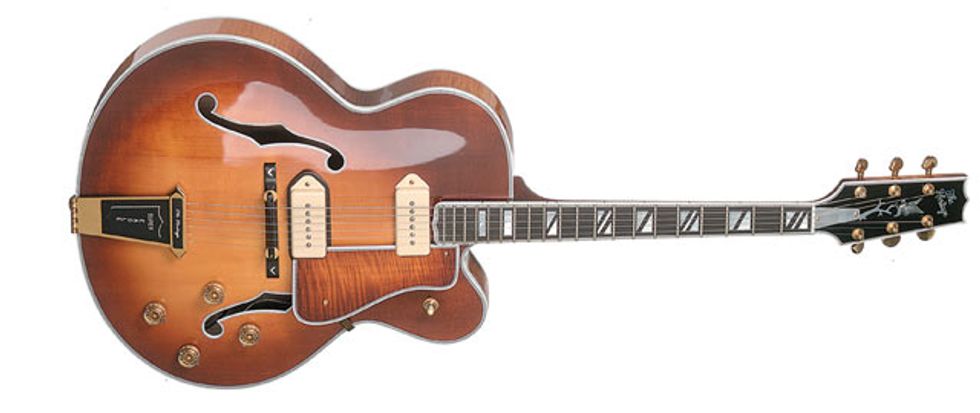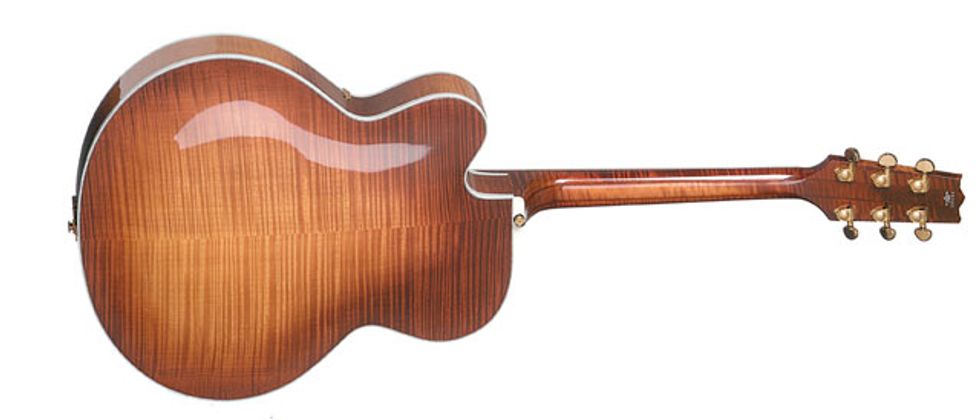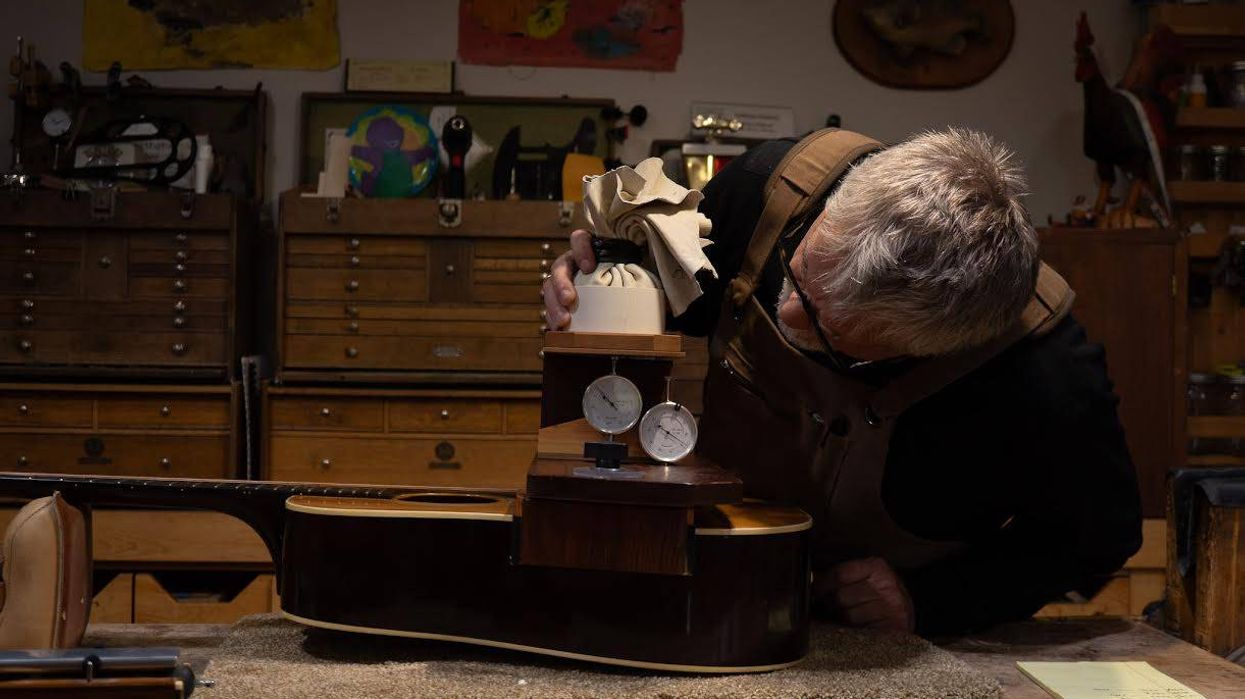Hey Zach,
I’m a huge fan of Heritage guitars, and I found these pictures
on the internet of a Heritage Super Eagle that’s for sale. It has
a serial number of K03XXX and appears to be in mint condition,
but I’ve never seen a Super Eagle with P-90 pickups.
Have you ever seen one of these before, and if so, what do
you think it’s worth? Thanks! - Jim in Philadelphia, PA


A premium jazzbox, the Heritage Super Eagle sports a carved spruce top. This model is still in production, although it typically sports humbuckers rather than the P-90s shown here. Pictures and guitar courtesy of Jeff Radtke
Hi Jim, You’re not alone in your affinity for Heritage guitars. Many players love these instruments because they have that vintage Gibson feel, without Gibson’s big-company pricing. For those of you who don’t know the history of Heritage, I’ll provide a little background.
When Gibson moved its remaining Kalamazoo plant operations to Nashville in 1984 (the Nashville plant opened in 1974), several longtime Gibson employees decided they wanted to stay in Michigan. Jim Deurloo, Marv Lamb, and J.P. Moats were three of those employees, and they made plans to create their own guitar company called Heritage. When Heritage became incorporated in 1985, Bill Paige and Mike Korpak joined forces with the group, though Korpak left shortly after. Heritage then set up shop in the oldest of five former Gibson buildings and purchased most of the machinery they use from their former employer. They quickly gained a reputation of building great, handmade guitars at a lower price than Gibson could offer.
When the company was founded, each of the owners already had 25 or more years of luthiery experience under his belt, so they were all involved in actually building Heritage guitars. Instead of using an internal sales and marketing team, Heritage outsourced the job to Lane Zastrow from Lasar Music Corporation, which proved to be a successful relationship that continues today.
When Heritage was founded in 1985, the owners were already nearing retirement. Once the mid-2000s rolled around, Heritage found itself struggling to keep up with demand, and there were actually rumors they had closed in 2007. In the fall of 2007, Heritage reformulated its ownership and hierarchy when a local Kalamazoo attorney named Vince Margol bought out Paige’s share (though Paige accepted a position within the company after the transaction). Margol began working on modernizing Heritage’s business operations and devised a transition plan to implement when the other three owners decide to retire.
Yes, the guitar model you found online is a Super Eagle. This guitar is built in the style of Gibson’s Super 400CES and is generally considered its equivalent. It was Heritage’s next to top-of-the-line model for many years in their electric archtop series—only surpassed by their American Eagle model. That said, Heritage introduced models like the Concert Master, Super KB, and Henry Johnson in the mid-2000s that were priced higher than the Super Eagle. According to the serial number, it was built in 1994 (Heritage uses a letter prefix for the year and K indicates the year 1994).
This model features a carved spruce top, curly maple back and sides, bound body and f-holes, bound maple pickguard, and a curly maple neck. The 20-fret bound ebony fretboard has pearl split-block inlays, and the bound headstock has an inlaid, pearl eagle atop a tree and logo. Other features include a pearl truss rod cover, Grover Imperial tuners, pearl inlays on the ebony bridge, a trapeze tailpiece, two P-90 pickups, gold hardware, and an antique sunburst finish. The guitar has an 18" body, 3" body thickness, and a 25.5" scale.
As of the early 2000s, this was one of only two Super Eagles built with P-90 pickups— the standard pickups are humbuckers offered in a single- or dual-pickup configuration.
This guitar is still offered by Heritage with an MSRP of $7500. It sells new for between $5000 and $5500, and the current used value is between $3000 and $3500. While this guitar is quite rare (one of only two), the P-90 pickups do not necessarily make it more desirable. P-90s are simply a preference for some players and the majority of guitarists would probably choose humbuckers instead. Remember that rare doesn’t always mean collectible. Since Heritage is still building the Super Eagle, you could order it new today with P-90 pickups for the same price or a small upcharge.
Make no mistake, the Heritage Super Eagle is a mighty fine guitar and one rarely finds them for sale in the used marketplace. This is definitely a treasure, especially if you appreciate a Gibson-style instrument in a newer, handbuilt guitar.
 Zachary R. Fjestad
is author of Blue Book of
Acoustic Guitars, Blue Book
of Electric Guitars, and Blue
Book of Guitar Amplifiers.
For more information, visit
bluebookinc.com or email
Zach at guitars@bluebookinc.com.
Zachary R. Fjestad
is author of Blue Book of
Acoustic Guitars, Blue Book
of Electric Guitars, and Blue
Book of Guitar Amplifiers.
For more information, visit
bluebookinc.com or email
Zach at guitars@bluebookinc.com.
















